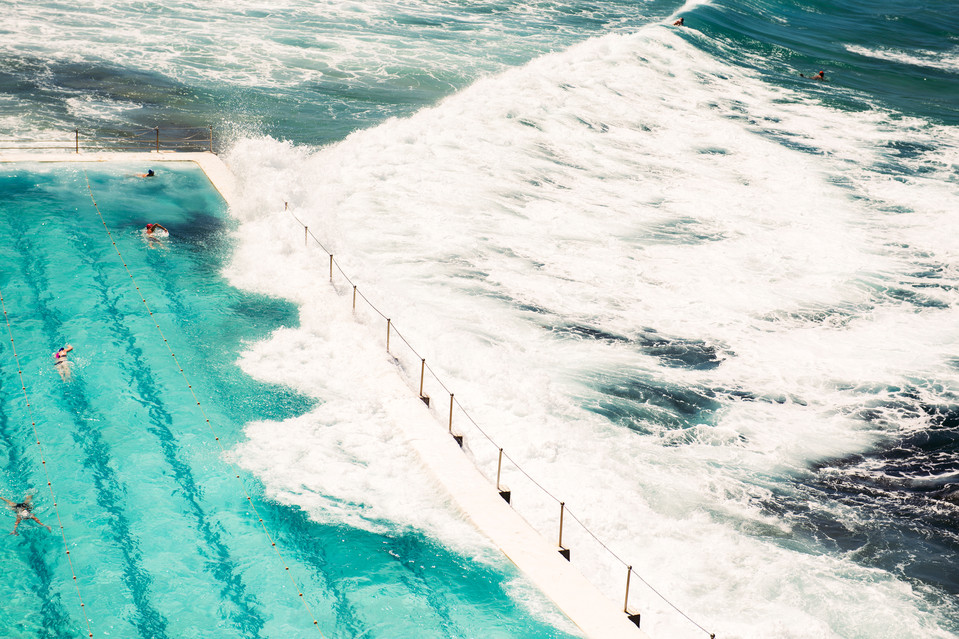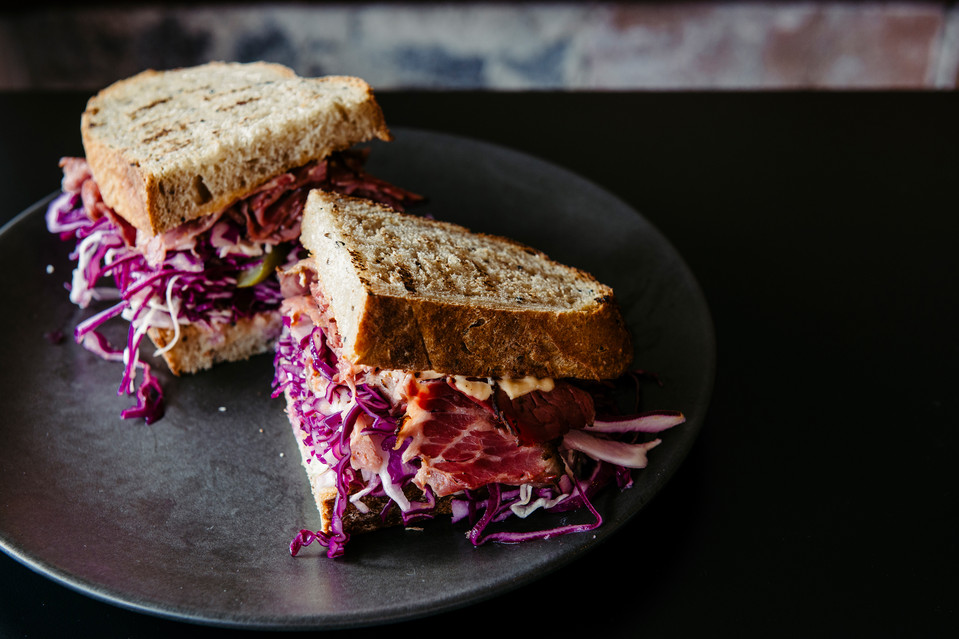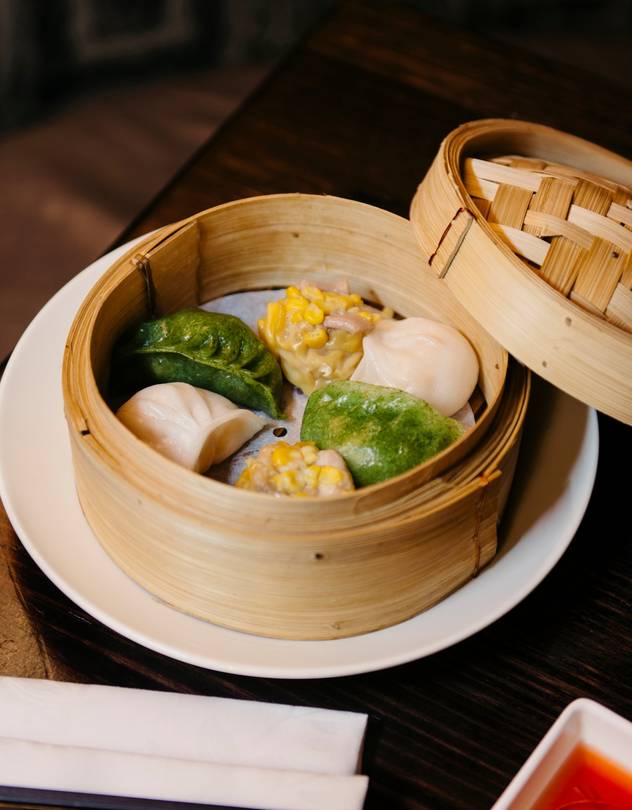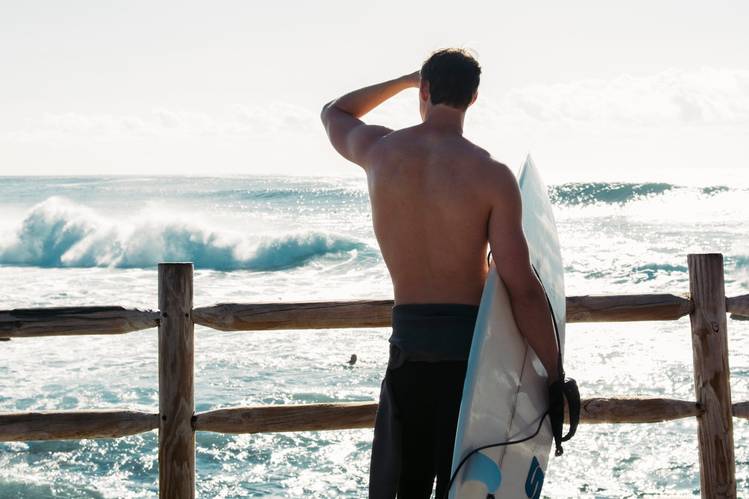In Bondi Beach, Sydney’s famed playground, epicurean restauranteurs are outshining the surfers.
Ask any random smattering of people—Australian or not—what they know about the Sydney suburb of Bondi, and odds are they’ll nearly all mention “the beach.” No real surprise there; the neighborhood’s wide crescent of golden sand, with its surfer-pocked aquamarine swells and famed Icebergs Club ocean pool, is one of Australia’s most successful tourist destinations.
But for much of its history, Bondi’s shoreline was hardly considered a selling point. In fact, for most of the 20th century, local families—like my mother’s, which lived just a few suburbs over between the 1940s and ’60s—studiously avoided the area’s beaches. A massive wastewater pipe polluted both the waves and the beach until it was rerouted in the early 1990s. (A few years later, my uncle and I commemorated Bondi’s newly hygienic waters by taking part in an ocean race; we emerged certifiably unscathed.)
During those decades of waterfront ignominy, however, Bondi became notable by evolving into one of Sydney’s most ethnically diverse neighborhoods. Drawn by its affordability, as well as its proximity via tram to Sydney’s Central Business District (just 6 miles away), an influx of working-class immigrants settled and established themselves here—including postwar Jewish émigrés from Russia and Eastern Europe, Italians, Pacific Islanders and Asians.
Over time, as the neighborhood morphed into a pricey enclave, these expat families, and their progeny, continued to prosper in Bondi. And as I discovered on my most recent visit there, the area’s multiculti past is experiencing a renaissance of sorts, notably within the uniquely eclectic food scene.
Bondi proper encompasses several square miles of steeply pitched residential streets that dip and swoop toward the shore, lined with brushy-flowered banksia trees. But the neighborhood’s spine is an eight-block stretch of Campbell Parade, the main drag that parallels the famous beach. Intersecting it are a warren of small streets that are, these days, chockablock (or, to use the local parlance, “chokka”) with new restaurants, cafes, bakeries and bars. Some are homey and old-fashioned; others, slick and modern. But nearly all nod to some aspect of the area’s culturally varied past.
“There’s such a rich history [in Bondi],” said restaurateur Lianne Gottheiner, “It was an important hub for pre- and postwar migrants. The streets used to be filled with milk bars, grocers, butchers…it’s nice to think that we’ve tapped back into all that.”
In 2014, Ms. Gottheiner and her brother Neil Gottheiner opened Lox Stock & Barrel, a “deli diner,” as a homage to Bondi’s Jewish community. Occupying a former barber shop (the same Jewish family has owned the building since 1938), the space is snug, white-tiled, and perpetually thronged. The siblings serve traditional delicatessen favorites—including multiple varieties of daily house-made bagels, pickles and smoked fish and meats—which they learned to love and to make growing up with their Polish parents. The lunch dishes I tried—a smoked ocean trout with pickled cabbage and a fattoush salad with fresh herbs—would have been right at home in Tel Aviv, while the brisket pastrami sandwich on rye might have been airlifted from New York’s Lower East Side (140 Glenayr Ave., loxstockandbarrel.com.au).
After a day of bodysurfing, my family and I donned our stylish best and headed to A Tavola, the most refined restaurant on bustling Hall Street, three blocks from the beach. The second Sydney outpost of chef Eugenio Maiale, whose parents emigrated from Abruzzo, Italy, the minimalist dining room centers around a 32-foot-long communal table of glossy marble. We lingered at that table for hours, scarfing down every last bit of creamy, tangy stracciatella, linguine alla Vastese (made with local prawns, mussels and hunks of fish in a zesty tomato broth) and thick ribbons of pappardelle with guanciale (Shop 2, 75-79 Hall St., atavola.com.au/bondi).
A few doors down, in a semi-alfresco food complex, is the more casual, equally tasty Italian fare at Da Orazio Pizza & Porchetta. The industrial loft-style space houses one of Bondi’s only wood-fired pizza ovens, which turns out a steady supply of charred, Neapolitan pies—most made with fresh fior di latte mozzarella, San Marzano tomatoes and cured meats. I was thrilled with my choice, a “Pagnuttiello” layered with thin slices of salami and black pepper, until I caught sight of a neighboring table’s pie heaped with porchetta from the house rotisserie and was seized with envy (Shop LG09, The Hub, 75-79 Hall St., daorazio.com).
Another Hall Street highlight, China Diner occupies a cavernous space with a neon-lit, tile-floored cocktail bar in front and an intimate dining room full of slinky banquettes in the back. Chef Jack Steer concocts creative pan-Asian dishes such as ban bao (steamed-bun sandwiches) stuffed with crispy pork, apple-and-carrot kimchi and sriracha mayo; paper-thin rice pancakes filled with shredded, hoisin-spiced duck; and slices of tender pork belly in a sauce of caramelized Thai chilies. The cocktail menu lures a hip, late-night crowd with curious libations like the Suzee Wong, made with gin, Suze (a gentian-root liqueur) and fresh watermelon juice (75-79 Hall St., chinadiner.com.au).
When the House of Luis Tans opened in 2015, just across from the beach, local foodies were skeptical. The owners, two reality-television celebrities, seemed to be going overboard with the neighborhood’s ethnic-food trend—drawing inspiration from all over Asia and South America. But now those same skeptics are regulars along with a mostly young, boho-chic crowd (namely, surfers and the models who love them). The menu consists of oddly delicious mashups, including roasted pumpkin dumplings, scallop ceviche with edamame and skewers of smoked chorizo and octopus. And if pairing a platter of sticky, Cantonese-style barbecue pork with a classic Peruvian pisco sour seems unorthodox—all the better (178 Campbell Parade, luistans.com).
The Lowdown: Savoring Sydney’s Bondi Beach
Staying There: Opened early last year a block from Campbell Parade, QT Bondi hotel has 69 airy rooms and suites with cool-kid interiors by Australian designer Nic Graham (from about $270; qthotelsandresorts.com). Another right-in-town, boutique property is the Adina Apartment Hotel Bondi, whose cheerful, modern studios and one- and two-bedroom “apartments” include kitchenettes and in-room laundry (from about $250; tfehotels.com). For quieter luxury—a respite from Bondi’s bars and restaurants, which stay lively late into the night—the Intercontinental in the adjacent waterfront community of Double Bay has 140 spacious rooms and suites, with a rooftop pool and lounge, a day spa, and a 24-hour fitness studio, set along a plaza of sleek shops just a 10-minute drive from Bondi (from about $160; icsydneydoublebay.com).
Beachcombing There: Most visitors want to hit the beach—which is free and open to the public all day every day. If you’re game to join the crowds of surfers, rent a board or sign up for lessons at longtime surf outfitter Let’s Go Surfing (letsgosurfing.com.au). To get a gorgeous view from the headlands surrounding the beach, take the 2.5-mile Bondi-to-Bronte walk; just be sure to wear sturdy shoes (waverley.nsw.gov.au). To work out the kinks after a day on the waves, try a yoga class at the popular Power Living studio a block from the beach (powerliving.com.au). On weekends, you can check out the wares of local artisans, as well as vendors of clothing, antiques and bath products, at Bondi Markets on Campbell Parade right across from the main beach parking lot (bondimarkets.com.au).
Tipping There: Tipping at restaurants isn’t historically customary in Australia, but adding 15 to 20% for excellent service is becoming more expected in well-touristed areas like Bondi.






